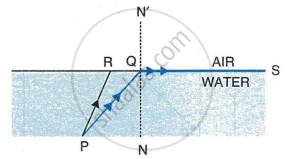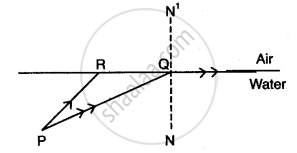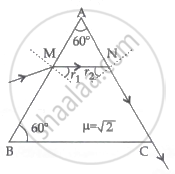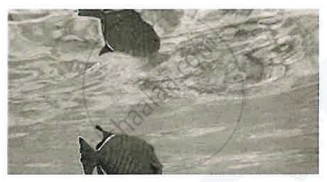Advertisements
Advertisements
Question
Solution
APPEARS IN
RELATED QUESTIONS
State the relation between the critical angle and the absolute refractive index of a medium.
In the given figure PQ and PR are the two light rays emerging from an object P. The ray PQ is refracted as QS.

- State the special name given to the angle of incidence ∠PQN of the ray PQ.
- What is the angle of refraction for the refracted ray QS?
- Name the phenomenon that occurs if the angle of incidence ∠PQN is increased.
- The ray PR suffers partial reflection and refraction on the water-air surface. Give reason.
- Draw in the diagram the refracted ray for the incident ray PR and hence show the position of image of the object P by the letter P’ when seen vertically from above.
Total internal reflection can take place only if ______.
Plot a graph between
Angle of incidence versus angle of refraction.
In the following figure, show two rays A and B travelling from water to air. If the critical angle for water- air surface is 48°, complete the ray diagram showing the refracted rays for each. State conditions when the ray will suffer total internal reflection.

PQ and PR are two light rays emerging from the object as shown in the figure below:

(i) What is the special name given to the angle of incidence (∠PQN) of ray PQ?
(ii) Copy the ray diagram and complete it to show the position of the image of the object P when seen obliquely from above.
(iii) Name the phenomenon that occurs if the angle of incidence ∠PQN is increased still further.
What are the examples of total internal reflection in nature?
A ray of light passes through a prism of refractive index `sqrt2` as shown in the figure. Find:

- The angle of incidence (∠r2) at face AC.
- The angle of minimum deviation for this prism.
A given ray of light suffers minimum deviation in an equilateral prism P. Additional prism Q and R of identical shape and of the same material as P are now added as shown in the figure. The ray will now suffer ______.

The diagram below shows a fish in the tank and its image seen in the surface of water.

Name the phenomenon responsible for the formation of this image.
